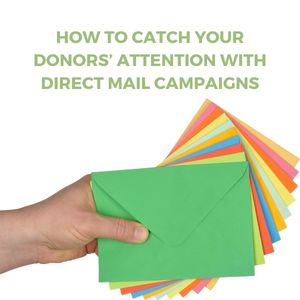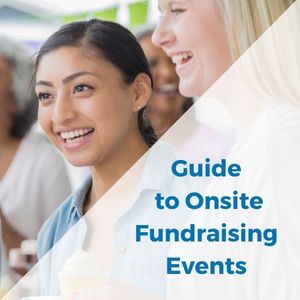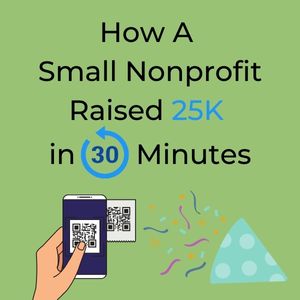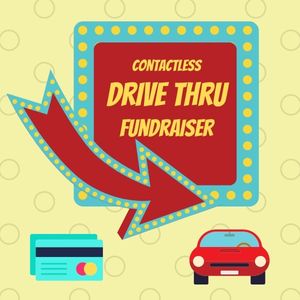
Multichannel marketing refers to the practice of interacting with donors using a combination of communication channels (websites, direct mail, email, social media, print and paid ads) and enabling donors to act in response using the channel of their choice. Multichannel marketing is all about choice. It is important for the simple reason that you must be where your donors are to engage with them.
Nonprofit organizations often fall into the trap of relying too heavily on one channel for their fundraising efforts – in most cases, email. It is not hard to guess why. Email is quick, easy, and cheap. But it also comes with some big drawbacks. Check out these statistics:
- More than 20% of marketing emails never make it to a subscriber’s inbox.
- Nonprofit emails that are delivered have an average open rate of 25%
- Good response rates (meaning a donation is made) is between 0.01-0.25%
If we apply the math to these facts assuming 10,000 emails sent and donations of $25:
8,000 delivered = 2,000 opened = 5 donors (on the high end) / $125 in donations realized
Those numbers are not exactly awe inspiring. But what happens when you combine your email efforts with another channel like direct mail?
Case Study: The Multichannel Fundraising Approach
We found a case study that revealed some incredible results. In this study, the organization conducted a substantial test to determine the effects of a multichannel approach to fundraising. They took one of their best direct mail campaigns and split it three ways:
- One segment got a letter containing an ask.
- One segment got a letter with no ask followed by an email with an ask.
- One segment got a letter followed by an email with identical asks.
The emails were timed to arrive shortly after the letters hit mailboxes.
The Results
Group A (letter only with ask): 14% response rate
Group B (letter (no ask) + email (ask): 1.4% response rate
Group C (letter + email (identical ask)): 23.9% response rate
The letter only response rate in this study came in well above current industry norms of around 5-9% and can perhaps be explained by the fact that they used one of their “best mailings” for the study. But the high response rates for both Group B and C is most likely attributed to the multichannel approach. Another finding was that people who got the multichannel treatment were more likely to give online. They ran an additional study and found that donors who received the mail/email combo gave roughly 25% more than those who received mail only.
Case Study: Targeted Direct Mail Campaign
So, combining direct mail with email seems like a slam dunk. But in the real world few small nonprofits have large enough donor databases or the budget to do a large-scale campaign and see these results. For small organizations, the real trick to a successful multichannel campaign is to deploy the direct mail campaign portion in a very targeted manner.
To illustrate this point, we will refer to another case study. In this case, a small nonprofit raised $65,000 from a pool of only 700 donors and prospects. How did they do it? They took these steps in creating their direct mail campaign:
- Identified all previous $50+ donors (about 250 people).
- Asked board members and staff to identify additional prospects from their contact lists.
- Asked board members and staff to review published donor lists on the annual reports of similar organizations and identified prospects that anyone knew.
- Created personalized letters to all the identified prospects and had a board member add a real signature.
- Passed these letters around at a board meeting and asked all board members and staff present to write personal notes to any donors they knew.
- Hand-addressed all envelopes, used first class stamps and included response cards with amounts beginning at $100 and going up.
The Results
“This process produced a 33% renewal rate for previous donors and a 15% acquisition rate for new donors, far outperforming any kind of mass mailing. Even better, the average gift from both prospects and donors was well over $100. In the subsequent year, using the same approach, [they] raised $116,500 from a pool of 800 donors and prospects.”
This case study was done in 1997, when email was not as widely used as today. If we take these results, which did not include email follow ups, and apply the learnings from the first case study, we expect the acquisition rate to rise to approximately 24% with even higher total giving.
Bringing It All Together
A targeted multichannel approach can drive growth and improve donor loyalty within your organization but for today’s tech savvy consumer consistent messaging and removal of barriers across all channels is the key. Consider implementing these steps to make the multichannel campaign even more attractive:
- Keep your messaging consistent – make sure the online landing page and print piece have the same messaging and style (font, logo, color, etc). By coordinating these two parts of the campaign, donors will have more trust in your organization and the message you are conveying.
- Optimize for mobile – 81% of all emails are now opened and read on mobile devices. Make sure your emails, landing page, and donation page are optimized for mobile. If an email does not look good on mobile, 72% will delete it immediately. If a donor clicks through and is directed to a page that is not optimized for mobile, they will most likely leave without donating. Those that make it to your form want the donation process to be quick and easy. Most nonprofit websites see a donation form abandonment rate of around 50% – 70% largely due to the friction donors encounter when trying to complete the form.
- Integrate mobile giving into your direct mail piece – by including a QR Code that launches your mobile optimized donation page, you remove significant friction in the giving process. No need to set the mail aside and go to the computer to donate later. Donors can scan to give immediately when they are motivated by your message.
- Keep the conversation going with social media – post on social media about your campaign before, during and after receipt of the mail piece. Multiple touchpoints help to increase the response rate. Donors want to know how the money will be used, how successful the campaign was, and to hear stories illustrating the impact of their donation. Social media is the perfect place to provide these updates and amplify updates sent via email.
It is easier than ever for your messages to get lost in the shuffle. By providing this roadmap, we hope that more small nonprofits consider multichannel fundraising and realize that direct mail campaigns are not out of their reach. A highly targeted direct mail campaign combined with an email follow up can yield great results. A bonus to having an integrated communications plan is that it affords multiple chances to gently remind your most engaged constituents about giving and the impact of your organization.










